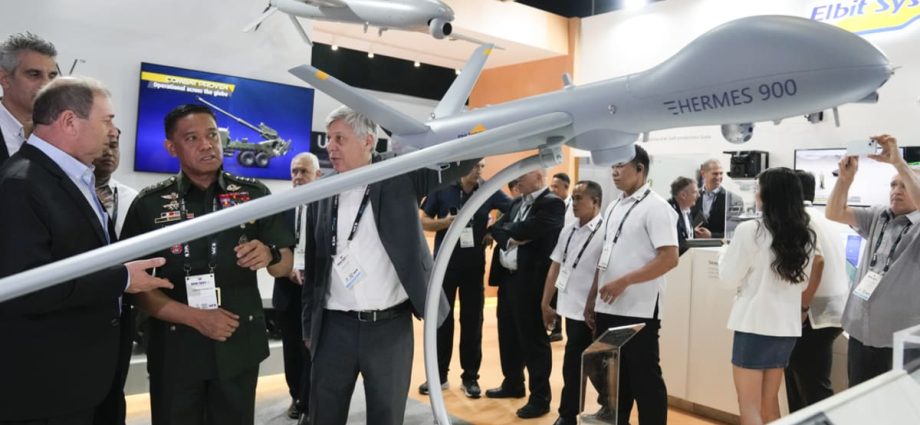
MANILA: Global defence contractors put their advanced hardware on display as the Philippines embarks on the latest phase of a multi-billion-dollar effort to modernise its military at a time of rising tension in the South China Sea.
From Lockheed Martin of the United States to Sweden’s Saab, Israel’s Rafael, and the India-Russia joint venture BrahMos, a total of 291 firms showcased military technology and weapons systems at an exhibition in Manila last week.
“The Philippines is an emerging market for the defence industry,” said Chester Cabalza, president of a Manila-based think tank, International Development and Security Cooperation.
Manila has allocated US$35 billion for the buildup, spread over the next decade, as it has faced off with China in sea and air confrontations over contested areas of the busy South China Sea waterway.
“Our strategic issues with China have caught the attention of defence firms, and the exhibit demonstrates support from like-minded nations, many of whom are our partners and allies,” Cabalza added.
Under President Ferdinand Marcos Jr, the Philippines has looked beyond traditional ally the United States to step up security partnerships with nations, such as Japan and Australia, also concerned at China’s increasing regional influence.
“The goal of modernisation is to develop a credible defence force, whether there’s the China issue or not,” said Jesus Avilla, a former assistant defence secretary, while visiting the biennial Asia Defence and Security (ADAS) exhibition.
In the third phase of a decades-long effort to beef up territorial defence and maritime security, the Philippine military is looking to buy advanced assets such as fighter jets, submarines and missile systems.
While long-standing military ties ensure the United States is a key supplier, the Philippines has widened defence procurement to nations such as India, Israel, Poland, South Korea and Türkiye.
Reflecting Manila’s expanding role in regional security, the exhibition featured new companies, and participating nations such as Britain, France and Japan.
Avilla stressed the urgency of modernisation as strategic challenges now stretch to encompass economic and food security, as the South China Sea holds crucial resources.
China claims almost the entire waterway, a conduit for more than US$3 trillion of annual ship-borne commerce, despite overlapping claims by Brunei, Indonesia, Malaysia, the Philippines and Vietnam.

